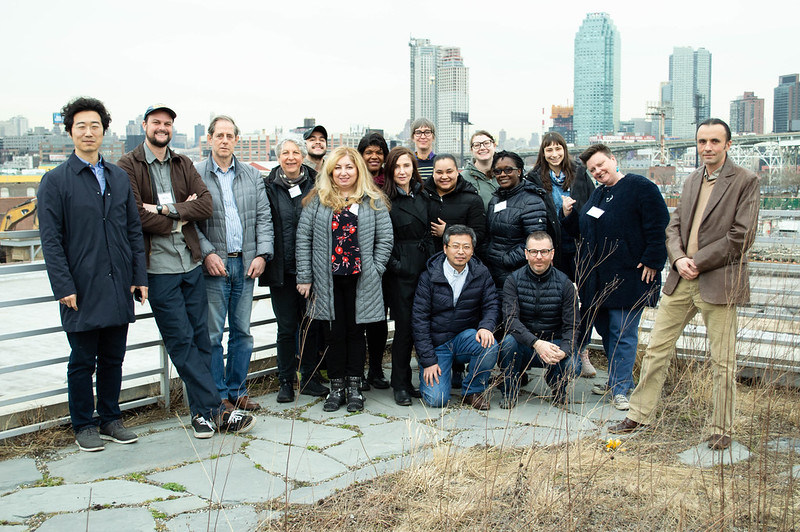CITY AS LABORATORY:
New York City is a laboratory in its own right that can be leveraged for practically any subject matter. This is one of the principal findings of our fellowship work. The most frequent context of teaching exploration during the Living Lab seminar was the city itself. On the streets the fellows explored the value and potential of using the city as a place, context, and subject for teaching. Each on-site activity challenged the fellows to develop ideas for assignments and curriculum development that could make use of the city as a laboratory for learning. We found that the city offered advantages that significantly enhanced learning and could be used in lieu of or in conjunction with classroom learning.
CITY AS PRIMARY SOURCE:
The streets and places of the city demand a discipline of paying attention and careful observation that has a great potential to kindle meaningful learning, thereby fostering life-long learning. The city has this potential largely because it can function as a primary source of information, because it requires the students to collect data and/or make direct observations and discern the information they require. This mode of inquiry requires interpretation and a search for patterns and meanings. In their study of educational research, Johnson and Christensen define primary sources as “those in which the creator was a direct witness or was in some other way directly involved in or related to the event.” The people of the city, its buildings, its streets, open spaces, artworks, flora and fauna, atmosphere, air quality, sounds, government, laws and regulations are all possible subjects for investigation. These primary sources are more direct, accessible, and observable. Rather than search for the meaning of someone else’s explanation, one can develop one’s own observations and interpretations. It is a form of research that is particularly suited to undergraduate students.
PLACE-BASED LEARNING: Planting the Seeds for Academic Service Learning
Learning to pay attention is a potential central asset of place-based education. Place-based learning offers a unique opportunity for field investigation and site-specific research that can play a powerful role in developing careful observation in students. Prof. Gregory Smith of Lewis & Clark College explores the important benefits of place-based learning. He notes that a “critical characteristic of place-based education is its emphasis on learning experiences that allow students to become the creators of knowledge rather than the consumers of knowledge created by others.” Place-based learning is a platform for inquiry and discovery by both the faculty and the students. Its application to the college curricula can be broad because the city itself offers a great diversity of subject matter for investigation. The Boyle Commission recommends “undergraduates need to become an active part of the audience for research. In a setting in which inquiry is prized, every course in an undergraduate curriculum should provide an opportunity for a student to succeed through discovery-based methods.”
Johnson, Burke. “Part IV: Selecting a Research Method.” Educational Research. Quantitative, Qualitative, and Mixed Approaches. Thousand Oaks, CA: Sage Publications, 2014. 482. Print.
Smith, Gregory A. “Place-Based Education: Learning to Be Where We Are.” The Phi Delta Kappan 83.8 (2002): 584-94. JSTOR. Web. 13 June 2014.
The Boyle Commission On Educating Undergraduates in the Research University. Reinventing Undergraduate Education: A Blueprint for America’s Research Universities. Rep. no. ED424840. Carnegie Foundation for the Advancement of Teaching, Princeton, NJ., 1998. Web. 6 Jan. 2015. <http://reinventioncenter.colostate.edu/the-boyer-report/>.





